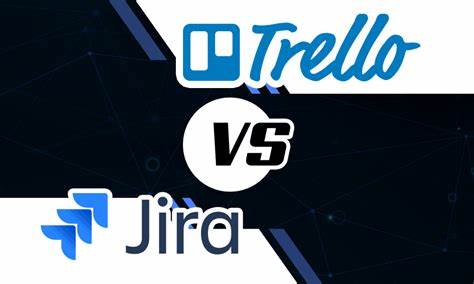Effective project management has become a critical component for organizations to thrive. The ability to efficiently plan, execute, and monitor projects is essential for driving success, improving team collaboration, and achieving desired outcomes. Two leading project management tools that have gained significant traction in the market are Trello and Jira.
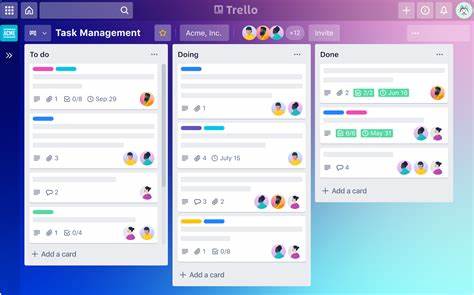
Table of Contents
The Importance of Effective Project Management
Effective project management is crucial for businesses of all sizes, as it enables them to streamline their operations, optimize resource allocation, and deliver projects on time and within budget. By leveraging the right project management tools, organizations can improve communication, enhance visibility, and foster a collaborative work environment, ultimately leading to increased productivity and better decision-making.
Understanding Trello and Jira
Trello and Jira are two of the most popular project management software solutions available today. Both platforms offer a range of features and functionalities to help teams plan, organize, and execute their projects effectively. However, they differ in their approach, target audience, and specific capabilities.
Key Differences and Similarities
While Trello and Jira share some commonalities, such as their ability to manage tasks, track progress, and foster team collaboration, they each have distinct features and strengths that cater to different types of organizations and project management needs.
Trello: A Closer Look
Core Features and Benefits
Trello is a Kanban-based project management tool that helps teams visualize their work, organize tasks, and collaborate effectively. Its intuitive interface and user-friendly design make it a popular choice for small to medium-sized teams, as well as for individuals looking to manage their personal tasks and projects.
Kanban-Style Boards
Trello’s core feature is its Kanban-style boards, which allow users to create and organize tasks, projects, and workflows into customizable columns or “lists.” This visual approach to task management helps teams understand the status of their work at a glance.
Task Management and Organization
Trello offers a range of tools for managing individual tasks, including the ability to assign due dates, set priorities, attach files, and add comments. Users can also create checklists, labels, and custom fields to further categorize and organize their tasks.
Collaboration and Teamwork
Trello facilitates seamless collaboration by allowing users to invite team members, assign tasks, and comment on cards. The platform also supports attachment sharing, activity logs, and notifications to keep everyone informed and aligned.
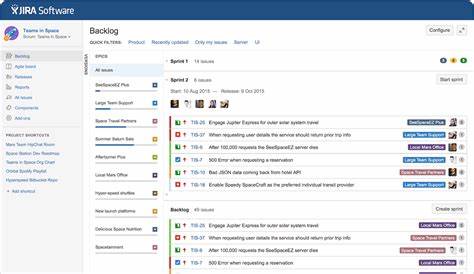
Integration with Other Tools
Trello can be integrated with a wide range of third-party applications, such as Google Drive, Dropbox, and Slack, to enhance its functionality and streamline the work process.
Jira: A Closer Look
Core Features and Benefits
Jira is a comprehensive project management and issue-tracking tool primarily designed for agile software development teams. It offers a robust set of features that cater to the needs of larger organizations and complex project management workflows.
Agile Project Management
Jira’s core strength lies in its support for agile project management methodologies, such as Scrum and Kanban. The platform provides features like backlog management, sprint planning, and burn-down charts to help teams effectively plan and execute their work.
Issue Tracking and Bug Reporting
Jira excels at issue tracking and bug reporting, allowing teams to log, prioritize, and manage bugs, tasks, and other project-related items. Its advanced workflow capabilities enable teams to automate processes and streamline their issue management.
Advanced Workflows and Automation
Jira offers a high degree of customization and automation, enabling teams to create and configure workflows that align with their specific project management needs. This includes the ability to set up custom rules, triggers, and notifications.
Scalability for Large Teams
Jira is designed to scale effectively, making it a suitable choice for organizations with large teams and complex project management requirements. Its enterprise-level features, such as advanced reporting and portfolio management, cater to the needs of larger businesses.
User Experience and Interface
Ease of Use and Learning Curve
Trello is widely recognized for its intuitive and user-friendly interface, making it relatively easy for new users to get started and become productive. Jira, on the other hand, can have a steeper learning curve, particularly for users who are not familiar with agile methodologies and advanced project management concepts.
Mobile Accessibility
Both Trello and Jira offer mobile applications, allowing users to access their project information and collaborate on the go. However, Trello’s mobile experience is generally considered more streamlined and optimized for mobile devices.
Customization Options
Trello provides a good level of customization, allowing users to create custom boards, labels, and fields to suit their specific needs. Jira, being a more robust and enterprise-oriented tool, offers a higher degree of customization and configuration options, catering to the complex requirements of larger organizations.
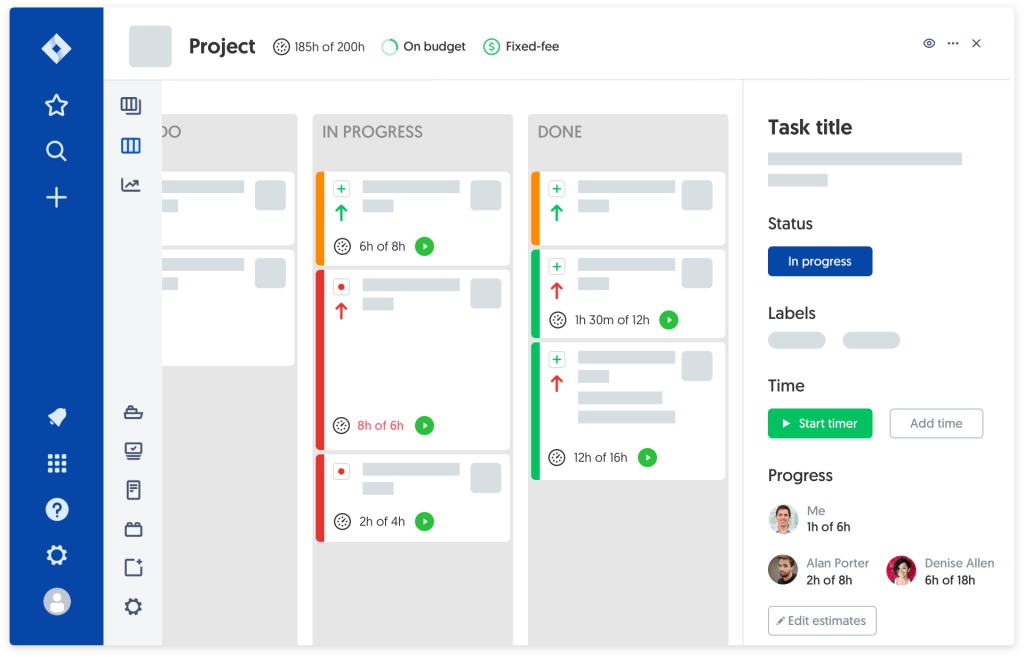
Pricing and Plans
Cost Comparison Between Trello and Jira
Trello offers a free plan with limited features, as well as paid plans starting at $5 per user per month. Jira, on the other hand, has a more complex pricing structure, with plans starting at $7 per user per month for the Cloud version and higher prices for the Server and Data Center versions.
Value for Money Analysis
When considering value for money, both Trello and Jira provide robust project management capabilities, but the choice may depend on the specific needs and scale of the organization. Trello’s more affordable pricing and simpler interface may appeal to smaller teams, while Jira’s advanced features and scalability may be more suitable for larger enterprises.
Bundles and Additional Features
Both Trello and Jira offer additional features and integrations that can be accessed through their respective paid plans or by purchasing add-ons and bundles. These can include enhanced reporting, portfolio management, and specialized functionality for different industries or use cases.
Customer Support and Resources
Responsive Support Teams
Trello and Jira both offer customer support channels, including email, live chat, and community forums, to assist users with their questions and issues. The responsiveness and quality of support can vary depending on the plan or package the user has purchased.
Extensive Documentation and Tutorials
Both platforms provide comprehensive documentation, including user guides, tutorials, and knowledge bases, to help users navigate their respective tools and get the most out of their features.
Community Forums and Resources
Trello and Jira have active user communities that share best practices, provide support, and contribute to the ongoing development and improvement of the platforms.
Comparison of Key Features
Task Management and Prioritization
Trello excels at visual task management with its Kanban-style boards, while Jira offers more advanced task management capabilities, including detailed issue tracking and prioritization.
Project Planning and Tracking
Jira’s integrated project planning and tracking features, such as Gantt charts and burndown reports, make it a stronger choice for complex project management. Trello’s simplicity may be better suited for more straightforward project planning needs.
Collaboration and Teamwork
Both platforms provide robust collaboration features, such as task assignments, comments, and file sharing. However, Jira’s advanced workflow automation and team management tools may make it a better fit for larger, more complex teams.
Reporting and Analytics
Jira offers more comprehensive reporting and analytics capabilities, allowing teams to generate detailed reports on project progress, team performance, and other key metrics. Trello’s reporting features are more limited in scope.
Integration Capabilities
Both Trello and Jira offer a wide range of third-party integrations, but Jira’s ecosystem tends to be more extensive, catering to the needs of larger organizations and complex software development workflows.

Best Practices for Choosing a Project Management Tool
Consider Your Team’s Needs and Size
Assess the specific requirements of your team, including the size of your organization, the complexity of your projects, and the level of collaboration and automation required.
Evaluate Features and Functionality
Carefully review the features and capabilities of each platform to ensure they align with your project management needs and workflows.
Assess Pricing and Value
Analyze the pricing plans and overall value proposition of Trello and Jira, taking into account the features, user limits, and long-term cost implications.
Read Reviews and Testimonials
Consult user reviews, case studies, and testimonials to gain insights into the real-world experiences and satisfaction levels of other teams using these project management tools.
Case Studies and Testimonials
Real-World Examples of Successful Use Cases
Explore case studies and success stories that highlight how organizations of various sizes and industries have effectively leveraged Trello and Jira to streamline their project management processes and achieve their goals.
Customer Feedback and Reviews
Analyze online reviews and customer feedback to understand the strengths, weaknesses, and overall user sentiment around Trello and Jira’s performance, usability, and customer support.
Get Started With Trello and Jira
To get started with Trello, you can visit their website at www.trello.com and click on the “Sign Up” button to create a new account. The sign-up process is straightforward and allows you to choose from individual, team, or enterprise plans based on your needs.
For Jira, you can visit www.atlassian.com/software/jira and select the “Get Started” option. Jira offers a variety of deployment options, including Cloud, Server, and Data Center, so you can choose the one that best fits your organization’s IT infrastructure and requirements.
Frequently Asked Questions
Q: What are the key differences between Trello and Jira?
A: The main differences between Trello and Jira lie in their target audience, feature sets, and overall complexity. Trello is a more user-friendly, Kanban-based tool that is well-suited for small to medium-sized teams, while Jira is a more robust and feature-rich platform designed for larger organizations and complex project management needs, particularly in the software development and IT domains.
Q: Which tool is better for agile project management?
A: Jira is widely considered the stronger choice for agile project management, with its specialized features for Scrum, Kanban, and other agile methodologies, as well as advanced workflow customization and automation capabilities.
Q: Can Trello and Jira be integrated with each other?
A: Yes, both Trello and Jira offer integration options that allow users to connect the two platforms and leverage their respective strengths. This can be particularly useful for teams that need the simplicity of Trello’s Kanban boards and the advanced project management capabilities of Jira.
Q: How do the pricing structures of Trello and Jira compare?
A: Trello offers a more straightforward pricing model, with a free plan and paid plans starting at $5 per user per month. Jira, on the other hand, has a more complex pricing structure, with cloud-based plans starting at $7 per user per month and higher prices for on-premises server and data center deployments.
Q: Which tool is better suited for larger enterprises?
A: Jira is generally considered the more suitable choice for larger enterprises due to its scalability, advanced features, and ability to support complex project management workflows and team structures. Trello may be better suited for smaller to medium-sized teams with less complex project management needs.
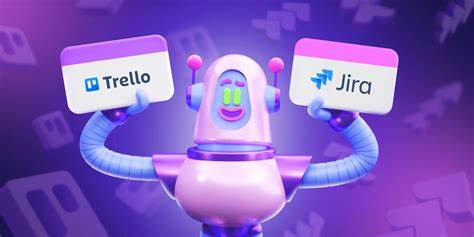
Conclusion
Trello and Jira are both powerful project management tools, each with its own unique strengths and capabilities. Trello’s intuitive Kanban-style boards and user-friendly interface make it a popular choice for smaller teams and personal task management, while Jira’s robust feature set, advanced workflow automation, and scalability cater to the needs of larger organizations and complex software development projects.
When choosing between Trello and Jira, it’s important to carefully evaluate your team’s specific requirements, project management needs, and budget. Consider factors such as ease of use, collaboration features, reporting capabilities, and integration with other tools. By aligning your project management needs with the right tool, you can streamline your workflow, improve team productivity, and ultimately drive better business outcomes.
Ultimately, the decision between Trello and Jira will depend on the unique needs and characteristics of your organization. By understanding the key differences and similarities between these two leading project management platforms, you can make an informed choice that will support your team’s success.

